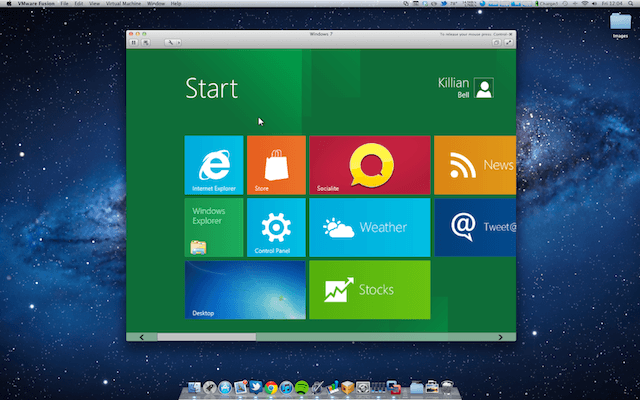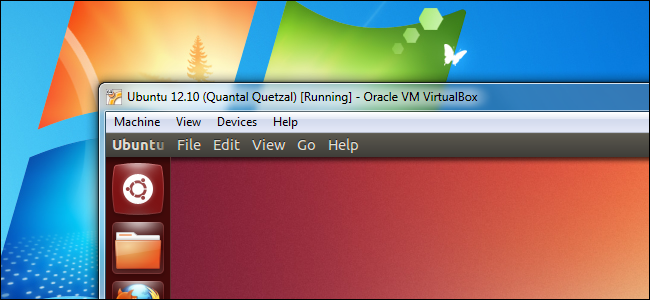

- Virtual pc for linux how to#
- Virtual pc for linux install#
- Virtual pc for linux software#
- Virtual pc for linux download#
- Virtual pc for linux windows#
When starting the first time, you may see some warnings and errors. Choosing a hard disk type is easy.Īfter this, your setup is complete now, start the virtual machine. Next, select VirtualBox Disk Image (VDI) as the hard disk type. Often, the minimum requirement is between 8GB to 15GB. Decide how much hard drive space your VM needs and choose accordingly. Similarly, create a virtual hard drive for your VM. You can increase as needed later once you know your resource overheads. If you have many VMs, allocate only the minimum needed to run each at first. Make sure to add enough memory for your VM and at the same time, leave sufficient for your host OS. The VirtualBox will ask you to select the memory you want to provide for your VM. Naming the virtual machine something vague isn’t great, define a naming standard first! Remember to select 32-bit or 64-bit, based on what you’ve downloaded. Next, select Linux in the type and Ubuntu in the version dropdowns. Step 3: Create a Virtual MachineĪfter installing VirtualBox, double-click on the icon to open it.įollowing this, name your VM according to a corporate naming convention. Now, it’s time to create your Linux virtual machine. You may also have to select the folder for installing VirtualBox. Provide permissions to your antivirus and firewalls to run VirtualBox.
Virtual pc for linux install#
Go through the install steps and go with the default values when prompted. What’s more, VirtualBox also works on all modern platforms similar to a paid-for alternative like VMware.ĭownload VirtualBox and the Oracle VM VirtualBox Extension Pack that comes with it. This virtualization tool allows your VM to run on your physical machine without having to reinstall the OS it’s also free! Besides these advantages, you can also expect good community support and a ton of productivity features.

Virtual pc for linux software#
Next, you need emulation software like VirtualBox. Simply pick the one that meets your needs. Often, you’ll select 64-bit for its ability to scale. In general, 32-bit architecture is faster than a 64-bit equivalent, but 64-bit enables you to assign much more resources to the system. You can then choose the 32-bit or 64-bit versions depending on your computer’s architecture. In short, Ubuntu has a user-friendly interface, works well for cloud, IoT, and other applications where security is critical. Many Linux distributions exist and Ubuntu is one of the most popular choices.
Virtual pc for linux download#
Get The Definitive Virtualization Guide Here Create a Linux Virtual Machine in 4 Steps Step 1: Download and Install Ubuntu Let’s now go over my step-by-step guide on how you can create a Linux VM on your computer.
Virtual pc for linux windows#
Using hardware virtualization principles, each VM can also have a separate RAM, memory, disk, etc.Įssentially, your physical computer can run a Windows operating system while one or more VMs can run on Linux. Each VM can run a different operating system. For instance, you can have many virtual machines inside a physical computer. In turn, this allows more than one VM to share the same resources. A VM sits on an abstraction layer residing between the VM and the hardware. Simply put, a virtual machine is a software-based computer system that uses a host computer’s hardware resources. Why settle for one computer when you can have as many as you want! What Is a Virtual Machine?
Virtual pc for linux how to#
Once you know how to create a Linux VM, you can apply this knowledge to create any VM you need! First, though, let’s go over what exactly a virtual machine is. Read on as I show you how to create a Linux virtual machine, starting from scratch.

Needless to say, it saves money as you don’t need separate hardware to meet your business needs. In addition to this flexibility, one host can have any number of VMs running different operating systems on it. This is great for software development and running older software versions. In any case, this helps you to easily switch back and forth between operating systems. You can create a virtual machine with any OS on one computer, regardless of its underlying OS. What if you can combine both? You can, with a Linux Virtual Machine.Īfter today’s technological advancements, you no longer have to stick to one OS. Windows on the other hand, costs a business money, but is easier to use and has enterprise level support offerings. Linux, for example, is an open-source operating system, well-known for its speed and configurability. Every operating system (OS) has its pros and cons.


 0 kommentar(er)
0 kommentar(er)
